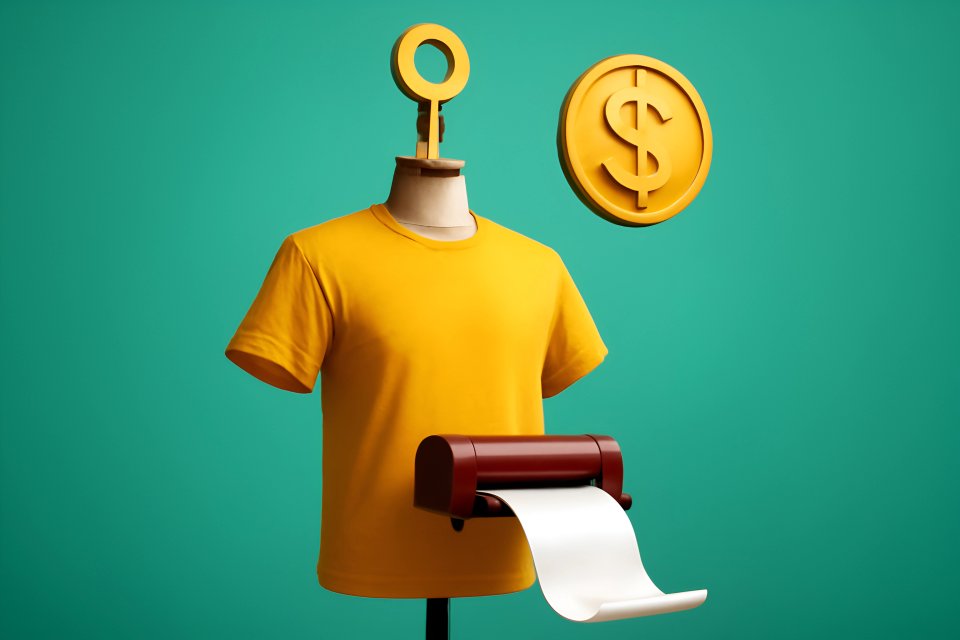
Tired of the grind? That endless cycle of chasing clients, hitting deadlines, and then starting all over again, hoping the next project comes through before the bills do. It’s the "feast or famine" reality that burns out even the most passionate creative entrepreneur, forcing you to trade every single hour of your life for a paycheck. But what if your creativity could work for you, earning money while you sleep, travel, or finally focus on that passion project you’ve been dreaming of?
This is not a fantasy. It’s a strategic business model, and the key is productizing your expertise. Digital templates are the perfect bridge between your unique creative talent and true financial freedom, allowing you to package your skills into an asset that sells again and again.
This isn't just another list of ideas. This is your complete roadmap. We'll guide you through the exact steps to research, design, launch, and market your own digital templates, turning your creative skills into a reliable engine for passive income digital template sales.
Why Digital Templates are a Goldmine for Creative Entrepreneurs
Let’s be brutally honest: the service-based model has a ceiling. You only have so many hours in a day. Digital templates shatter that ceiling, offering one of the most powerful creative passive income ideas available today.
Imagine crafting a masterpiece—a stunning social media kit, a brilliant resume design, or a hyper-organized project planner—just once. Now, imagine selling that single piece of work to 10, 100, or even 1,000 customers around the world, 24/7, without lifting another finger. As experts at MyDesigns.io point out, this model effectively decouples your income from your time, creating a truly automated sales machine that works for you.
Forget shipping costs, inventory management, and supply chain nightmares. Digital products have incredibly low overhead, which translates to sky-high profit margins. According to Printify, these intangible assets are delivered electronically, meaning your only real costs are the platform fees and your initial time investment, making them one of the most cost-effective and scalable business models. This is the core principle behind many successful low-cost side hustles that build real wealth over time.
You don't need to learn a new trade or go back to school. The skills you already use to serve your clients—your eye for design, your knack for organization, your expertise in software like Canva or Adobe—are the exact skills needed to create best-selling templates. You are simply packaging your existing genius into a scalable format, transforming your service into a tangible business asset that grows in value and generates predictable, recurring revenue.
Step 1: Find Your Niche & Validate Your Profitable Template Idea
Before you open a single design app, let's ensure you're creating something people will actually buy. The biggest mistake creators make is designing for themselves instead of solving a desperate market need. Your goal is to find the perfect intersection of your passion and their pain point.
Start with Your Zone of Genius
Your most profitable idea is likely hiding in plain sight, right within your current workflow. Ask yourself: What software makes you feel like a wizard? Are you a Canva pro, an Adobe Illustrator master, or a Notion organizational guru? What's the one thing clients are always asking you to create for them? Think about the repetitive tasks in your own creative process that could be streamlined into a template for others. This is where you’ll find the foundation for a product you can create with confidence and authority.
Uncover Problems You Can Solve
The most successful digital templates don't just look pretty; they are lifesavers. They solve an urgent, specific problem for a clearly defined audience. A small business owner doesn't just want "social media graphics"; she needs professional, on-brand Instagram posts fast so she can get back to running her business. A recent graduate doesn't just want a "resume"; he needs a modern, ATS-friendly template that helps him land his dream job. Your template is the hero that saves them time, money, or frustration.
Actionable Market Research Tactics
Now it's time to become a digital detective. Dive deep into marketplaces like Etsy and Creative Market. Don't just look at the best-sellers; read the reviews. According to Etsy's own Seller Handbook, understanding customer feedback is critical for identifying what buyers love and, more importantly, what's missing from existing products. Use visual search engines like Pinterest and Instagram to spot trending aesthetics. Search for terms like "real estate Instagram template" or "boho wedding invitation" to understand the visual language of your target niche and find gaps you can fill with your unique style.
Step 2: Design High-Value Templates That Practically Sell Themselves
A great template isn't just beautiful—it's incredibly user-friendly. Your customer is likely not a designer, so your job is to empower them to get a professional result with minimal effort. Here’s how to design for success.
Choose the Right Tool for the Job
Your choice of software directly impacts who your customer is and how they'll use your product. Designing in Canva is a brilliant move for targeting the massive market of entrepreneurs and non-designers who need something fast and accessible. As the Canva Design School explains, its user-friendly interface makes it the perfect platform for creating templates that anyone can edit. For professional-grade, highly customizable templates aimed at other designers or advanced users, the Adobe Suite (Illustrator, InDesign) is the industry standard. Meanwhile, niche tools like Figma, Notion, or even Google Suite are perfect for creating specialized products like UI kits, productivity planners, or business documents.
The Anatomy of a Best-Selling Template
The secret to a five-star review is a seamless user experience. Prioritize clarity and simplicity above all else. Use logically named and organized layers, create an editable color palette, and use clear placeholder text and images that guide the user on what to do next. Remember, customization is king. The more easily a customer can adapt your template to their own brand, the more valuable it becomes.
One of the most powerful ways to elevate your product is to include a simple "How-To" guide. A one-page PDF with instructions or a short video tutorial adds immense value, drastically reduces customer support questions, and shows you care about their success. Finally, invest time in creating professional mockups. You aren't selling a file; you're selling the dream of a beautiful Instagram feed, a polished presentation, or a perfectly planned wedding. Showcasing your template in a polished, real-world context is what makes the sale.
Step 3: Set Up Your Digital Shop for Effortless Sales
Now that you have a product, let's choose the best place for selling digital products online. Your choice of platform will determine your level of control, your profit margins, and your marketing strategy. There are two primary paths you can take.
Option A: Marketplaces (The Fast Start)
Platforms like Etsy and Creative Market are fantastic for getting started. Their biggest advantage is built-in traffic. Millions of buyers are already searching these sites for the exact products you're creating. They also handle payment processing and digital delivery, making the technical side incredibly simple. However, this convenience comes at a cost. You'll face high competition, pay transaction fees on every sale, and have limited control over your branding and customer relationships.
Option B: Your Own Platform (The Long-Term Asset)
For ultimate control and profitability, selling on your own platform is the goal. Simple tools like Gumroad or SendOwl make it easy to sell directly from your website with minimal setup. For a more robust e-commerce solution, platforms like Shopify or a WordPress site with WooCommerce offer endless customization. The pros are significant: you keep a much higher percentage of the revenue, you own the customer list, and you build a brand that is 100% yours. The challenge? You are responsible for driving 100% of the traffic.
The Earnist Recommendation
Don't get paralyzed by choice. We recommend a hybrid approach. Start by listing your templates on a marketplace like Etsy to validate your product ideas and generate your first sales. Use this momentum to build an email list and a social media following. Once you have consistent traction and a growing audience, you can launch your own Shopify or Gumroad store and begin migrating your loyal customers to a platform you fully control, creating a truly sustainable and profitable online venture.
Step 4: Your Marketing Engine for Consistent Digital Template Sales
This is where "passive" begins. A great product is useless if no one knows it exists. By setting up these automated marketing systems, you can create a machine that drives consistent digital template sales for months and years to come.
Pinterest: Your Visual Search Engine Powerhouse
Pinterest is not social media; it's a visual search engine, and it is arguably the most powerful free marketing tool for template sellers. Users are actively searching for ideas and solutions, making them a high-intent audience. As one successful creator noted, free traffic methods like Pinterest can lead to incredibly high profit margins. Create multiple, eye-catching pins for each template, using strong keywords in your descriptions, and link them directly to your product page. This creates a web of evergreen content that will drive traffic and sales long after you've pinned it.
Content Marketing & SEO (The Slow Burn, High Reward)
This is the core Earnist strategy for building a long-term, sustainable business. Create valuable content that solves a problem related to your template. If you sell Instagram story templates for coaches, write a blog post titled "10 Instagram Story Ideas to Get More Coaching Clients." Within the post, naturally feature your templates as the perfect tool to execute those ideas. This strategy positions you as an expert, builds trust, and attracts your ideal customer through search engines like Google. It's a slow burn, but the reward is a steady stream of free, organic traffic.
Build an Email List with a Freebie
Your email list is the single most valuable asset in your business. It's a direct line of communication to your most engaged followers that you own completely, independent of any algorithm. Create a simple, high-value "taster" template—like a single social media graphic or a one-page checklist—and offer it for free in exchange for an email address. According to MailerLite, this strategy not only builds your audience but also allows you to nurture leads and promote new products directly to a warm audience, making every future product launch more successful than the last.
Conclusion: Turn Your Creativity into Your Freedom
We've covered the entire roadmap: finding a profitable niche, designing a high-value product, choosing the right sales platform, and building a marketing engine to power it all. The path from trading time for money to building an automated income stream is laid out before you. It requires strategic work upfront, but the payoff is a business that serves your life, not the other way around.
Your skills are too valuable to only be sold by the hour. You have the power to break free from the feast-or-famine cycle and build a sustainable, scalable business that honors your creative talent and gives you back your time. Start today by brainstorming one problem you can solve with a template.
What's the first digital template you're inspired to create? Share your idea in the comments below

















